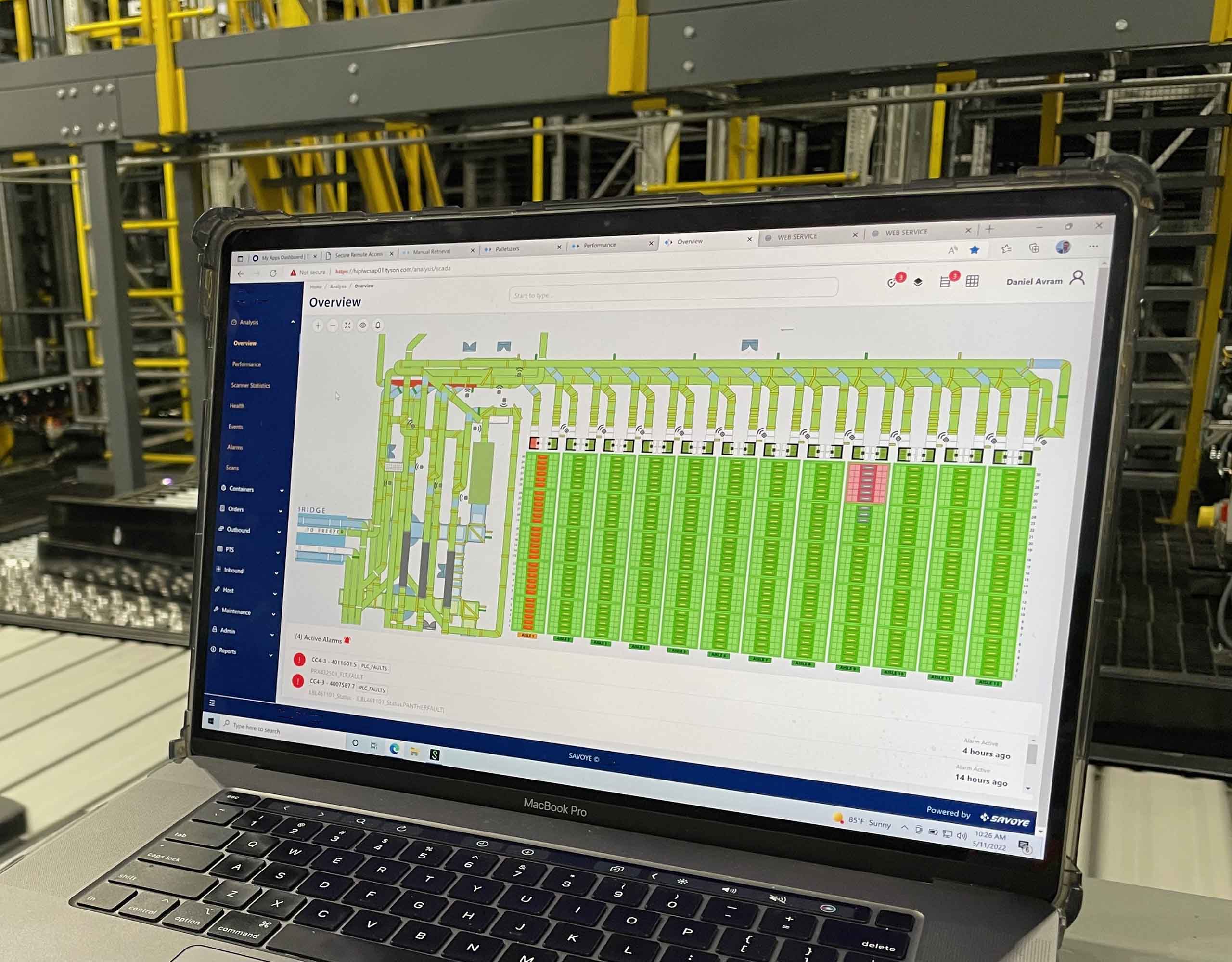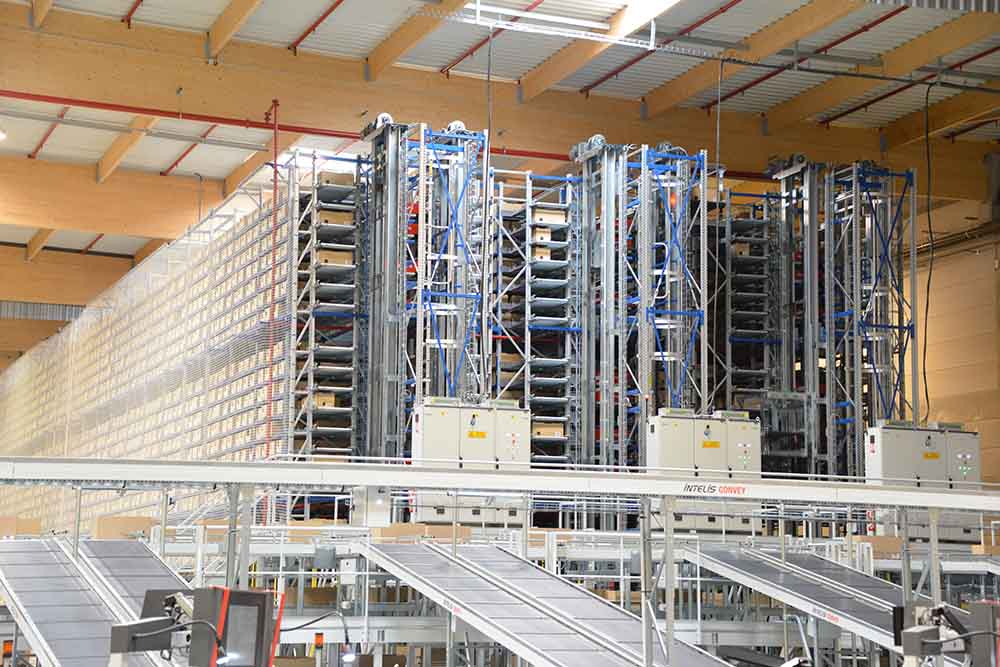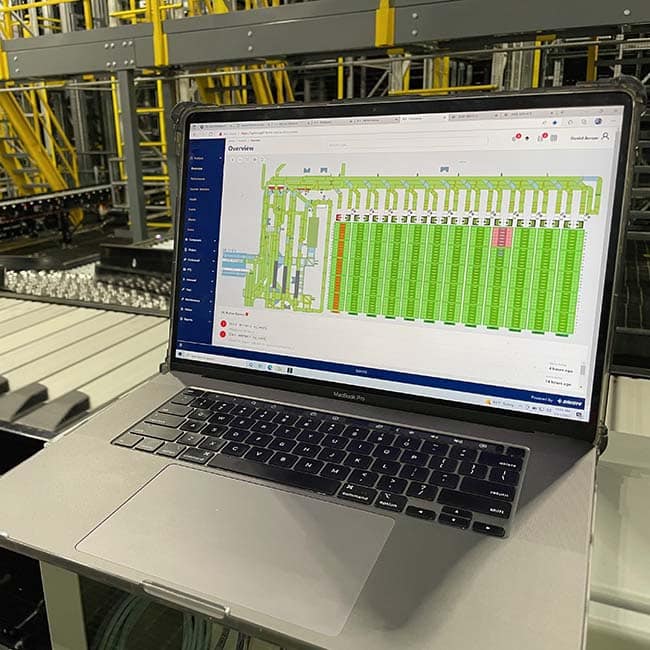Data plays a central role in a logistics platform’s activities and lies at the heart of all its operations. It is with this in mind that we have equipped KWEST with operational data collection and retrieval functions by means of a 100% webbased supervision module. The data collected relates to all the equipment managed: operator stations, conveyors, mobile robots, shuttle systems, stacker cranes, palletizing robots, picking robots, packaging machines, etc. Each piece of equipment continuously reports on its operating status and the activity being performed.
WHAT VISIBILITY OF YOUR ACTIVITY DOES KWEST ENSURE?
Therefore, in production mode, it is possible to see, by means of a complete graphic overview, the status of each system zone and the status of each piece of equipment. A number of key indicators are defined for each zone, enabling a user to identify at a glance whether the lights are green or not. This monitoring provides access to a set of real-time KPIs, from the progress of the order book to the productivity of the system, overall and by workstation. It is also easy to monitor the load rate of various warehouse zones and to thereby identify potential saturation phenomena. In addition, a set of configurable alerts enable the user to be warned that a predefined threshold has been exceeded, for example, real-time alerts in the event that the occupancy rate for automated storage has been exceeded. All this enables the user to be informed and to act if necessary, facilitating real-time decision-making by the operator on the basis of changes in daily activity and contingencies to be addressed. Automated inventory management is also facilitated, with full functionality enabling the status of locations and media stored to be consulted, a graphic overview of the breakdown by product code to be obtained and even stocktaking or product exclusion assignments to be organized. A set of KPIs is also available for performing detailed analyses based on the production history for each piece of equipment, station, or operator.
In maintenance mode, this monitoring allows the user to very quickly identify equipment behaving abnormally, to perform more detailed analyses and to prioritize maintenance operations to be undertaken. Combined with a CMMS application, it is thus possible to schedule preventive maintenance operations on the basis of cycles performed by each piece of equipment.
As a 100% web-based application, it is accessible from a remote PC or from a tablet anywhere in the warehouse, allowing the user to work naturally on the go, in particular for the team in charge of system maintenance.




